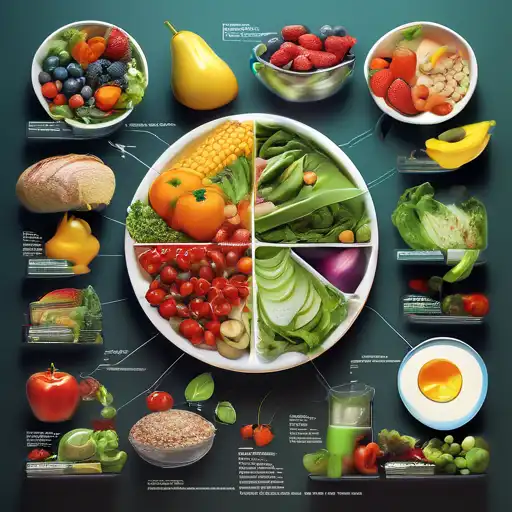The Ultimate Guide to Healthy Eating Habits
Healthy eating is not about strict dietary limitations, staying unrealistically thin, or depriving yourself of the foods you love. Rather, it’s about feeling great, having more energy, improving your health, and boosting your mood. This guide will walk you through the basics of healthy eating habits that can help you achieve your wellness goals.
Understanding the Basics of Healthy Eating
At its core, healthy eating is about balance, variety, and moderation. It means consuming a variety of foods that give you the nutrients you need to maintain your health, feel good, and have energy. These nutrients include protein, carbohydrates, fat, water, vitamins, and minerals.
Key Components of a Healthy Diet
- Fruits and Vegetables: Aim for at least five portions of a variety of fruit and vegetables every day.
- Protein: Include a variety of protein sources such as lean meats, poultry, fish, beans, peas, and nuts.
- Whole Grains: Choose whole grains over refined grains for added fiber and nutrients.
- Dairy: Opt for low-fat or fat-free dairy products to reduce saturated fat intake.
Planning Your Meals
Meal planning is a great way to ensure you’re eating a balanced diet. It can help you save time and money, reduce food waste, and avoid the temptation of unhealthy fast food. Start by planning your meals for the week, making a shopping list, and sticking to it.
Tips for Successful Meal Planning
- Check your pantry before shopping to avoid buying what you already have.
- Plan meals around foods that are in season for better taste and value.
- Prepare meals in advance to save time during the week.
Healthy Eating on a Budget
Eating healthy doesn’t have to be expensive. With a little planning and creativity, you can enjoy nutritious meals without breaking the bank. Buy in bulk, choose store brands, and look for sales and discounts on healthy foods.
Budget-Friendly Healthy Foods
- Beans and lentils are affordable, high in protein, and versatile.
- Seasonal fruits and vegetables are often cheaper and more nutritious.
- Whole grains like brown rice and oats are cost-effective and filling.
Overcoming Common Challenges
Adopting healthy eating habits can be challenging, especially with a busy schedule or limited access to healthy foods. However, small changes can make a big difference. Start by incorporating one healthy habit at a time, such as drinking more water or adding a vegetable to every meal.
Strategies for Staying on Track
- Keep healthy snacks on hand to avoid unhealthy temptations.
- Stay hydrated by drinking plenty of water throughout the day.
- Listen to your body’s hunger and fullness cues to avoid overeating.
Healthy eating is a journey, not a destination. It’s about making choices that improve your health and well-being. By following the tips and strategies outlined in this guide, you can develop healthy eating habits that last a lifetime. For more tips on nutrition and wellness, check out our nutrition tips page.
